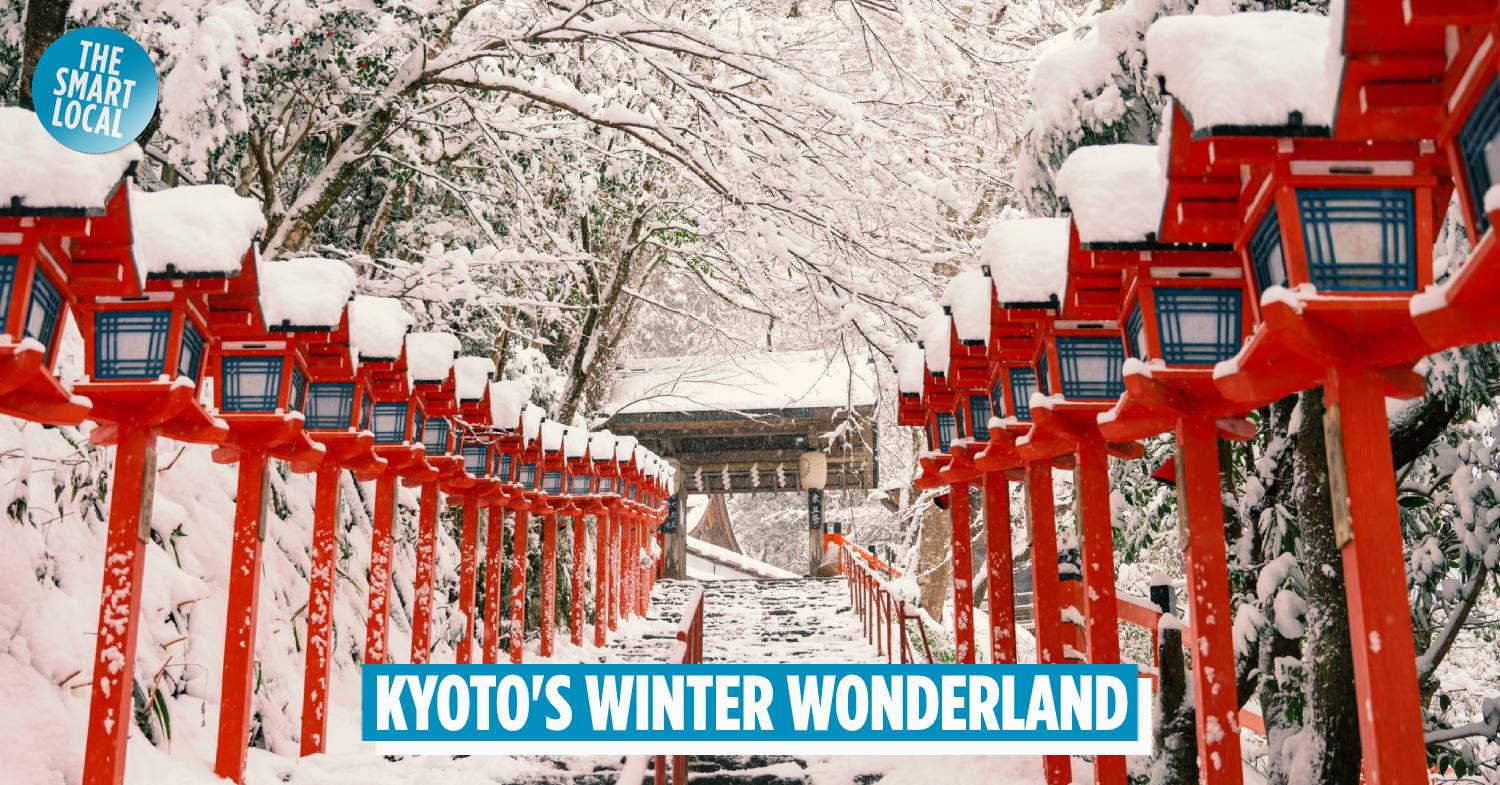Kifune Shrine in winter
Kyoto, the historical and cultural heart of Japan, is a city known for its traditional temples, shrines, gardens, and preserved architecture. There’s no lack of beautiful shrines in Kyoto, but Kifune Shrine is a cut above the rest, especially in winter.
Kifune Shrine in winter
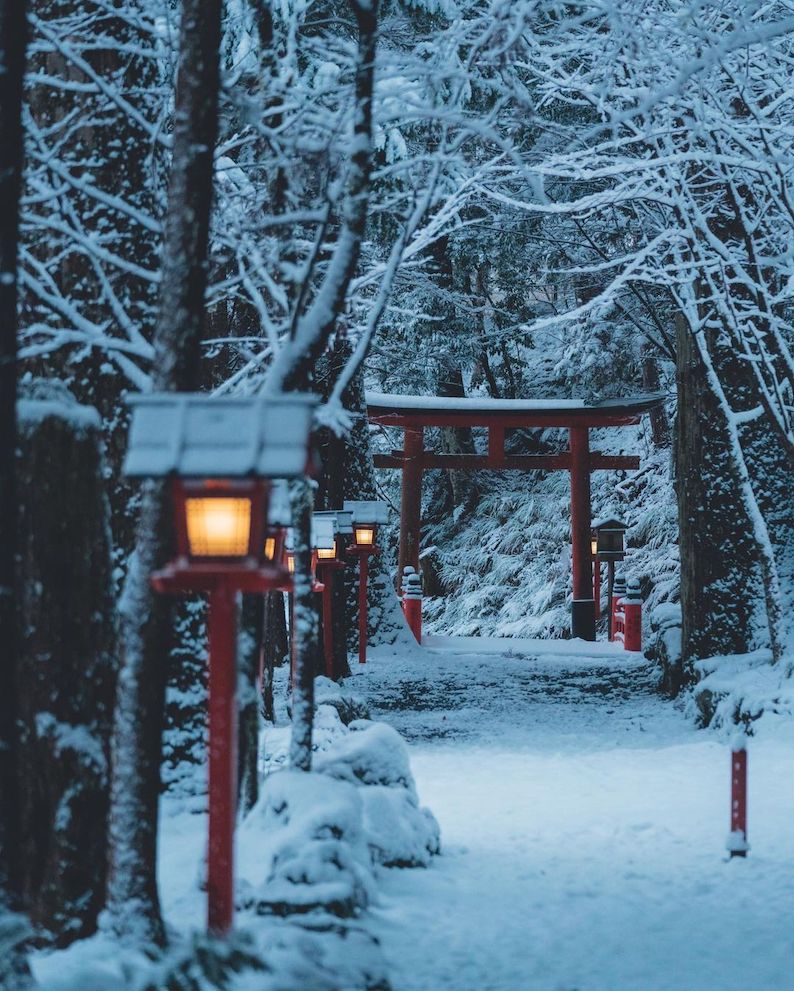
Image credit: @kifunejinja
Kifune Shrine is located in Kibune, a small village tucked away among the northern mountains of Kyoto. Locals visit to pray to the gods enshrined there, and also to admire the stunning scenery in winter.
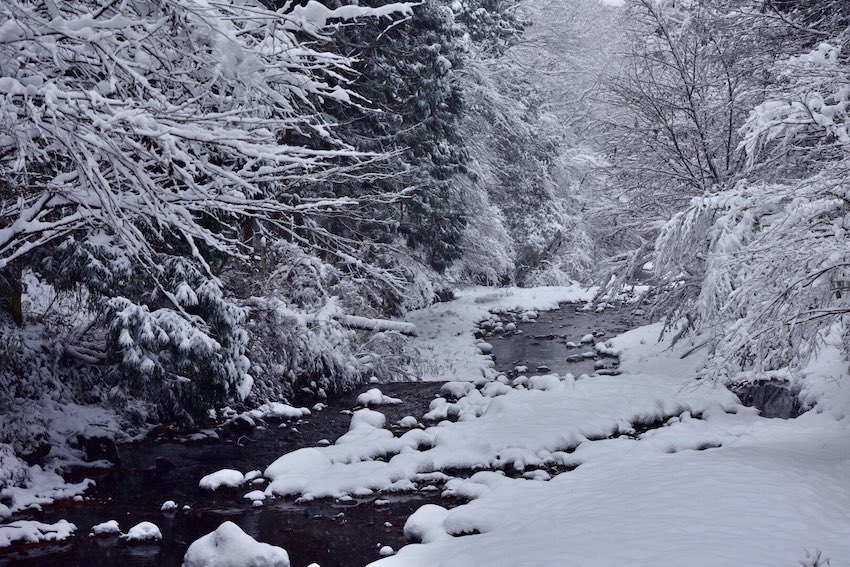
Image credit: @konikoni_taihei
Since Kifune Shrine is located in a small village, there aren’t many buildings around. In winter, the snow falls onto the trees, pathways, and streams. It’s left there to accumulate, turning the landscape into a winter wonderland.
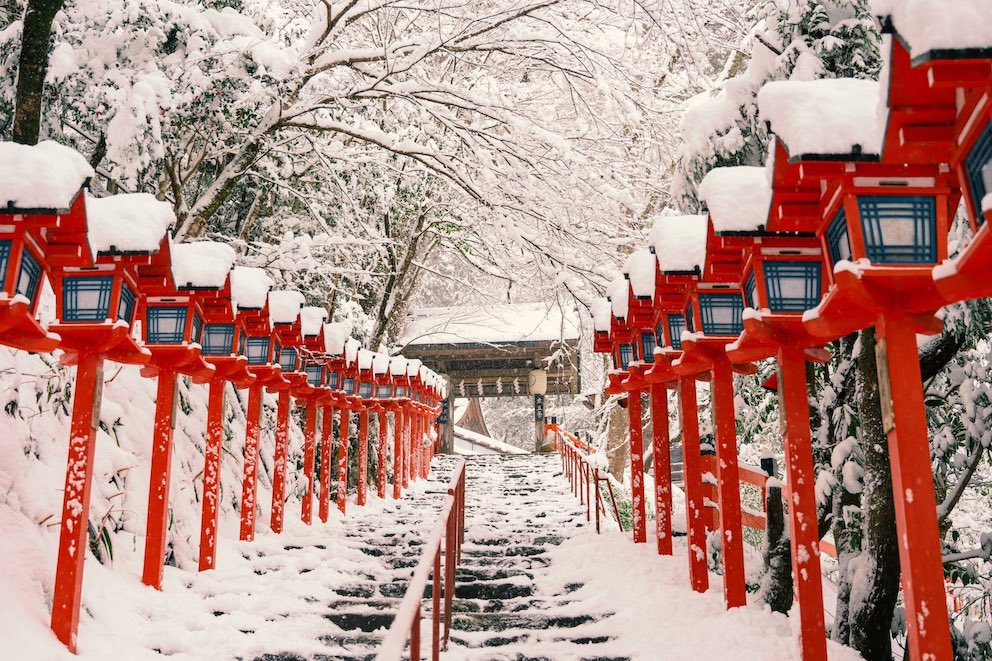
Image credit: @CultureKyoto
The most popular spot to snap a photo in winter is at the stone stairs lined with vermillion lanterns. The flight of stone stairs leads up to the main hall of Kifune Shrine.
The sight of the trees and steps covered in snow makes one feel as if they’ve been transported to Narnia.
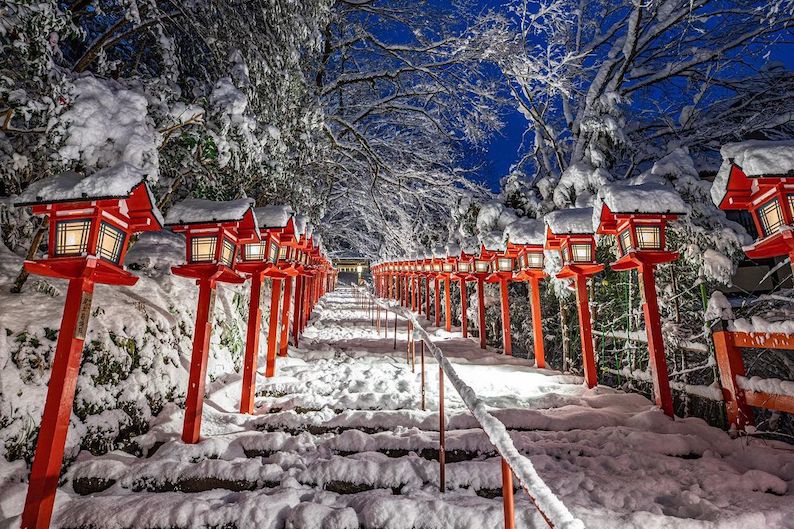
Image credit: @yamatox14r
Every winter, Kifune Shrine holds an illumination event. The shrine is lit up on Saturdays where there’s a large amount of snowfall. The decision to hold the event is made based on the level of snowfall and is only announced on the day itself, at 3PM. If you’re visiting in winter, be sure to try your luck and catch the illumination.
Note: The winter illumination has been cancelled this winter (2020/2021).
Visit for water and marriage-related prayers
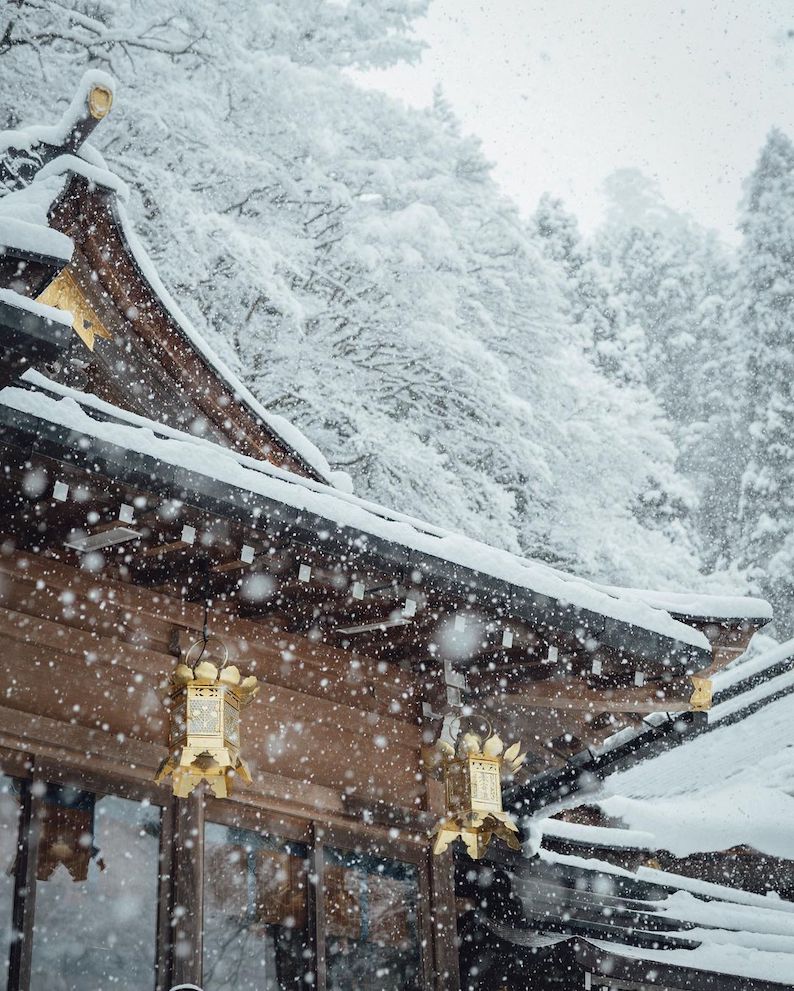
Image credit: @kifunejinja
Honmiya is Kifune Shrine’s main hall, where Takaokami-no-kami is enshrined. Takaokami-no-kami is the god in charge of providing and controlling water, so sailors, boatmen, and people who work at sea visit the shrine to pray for protection.
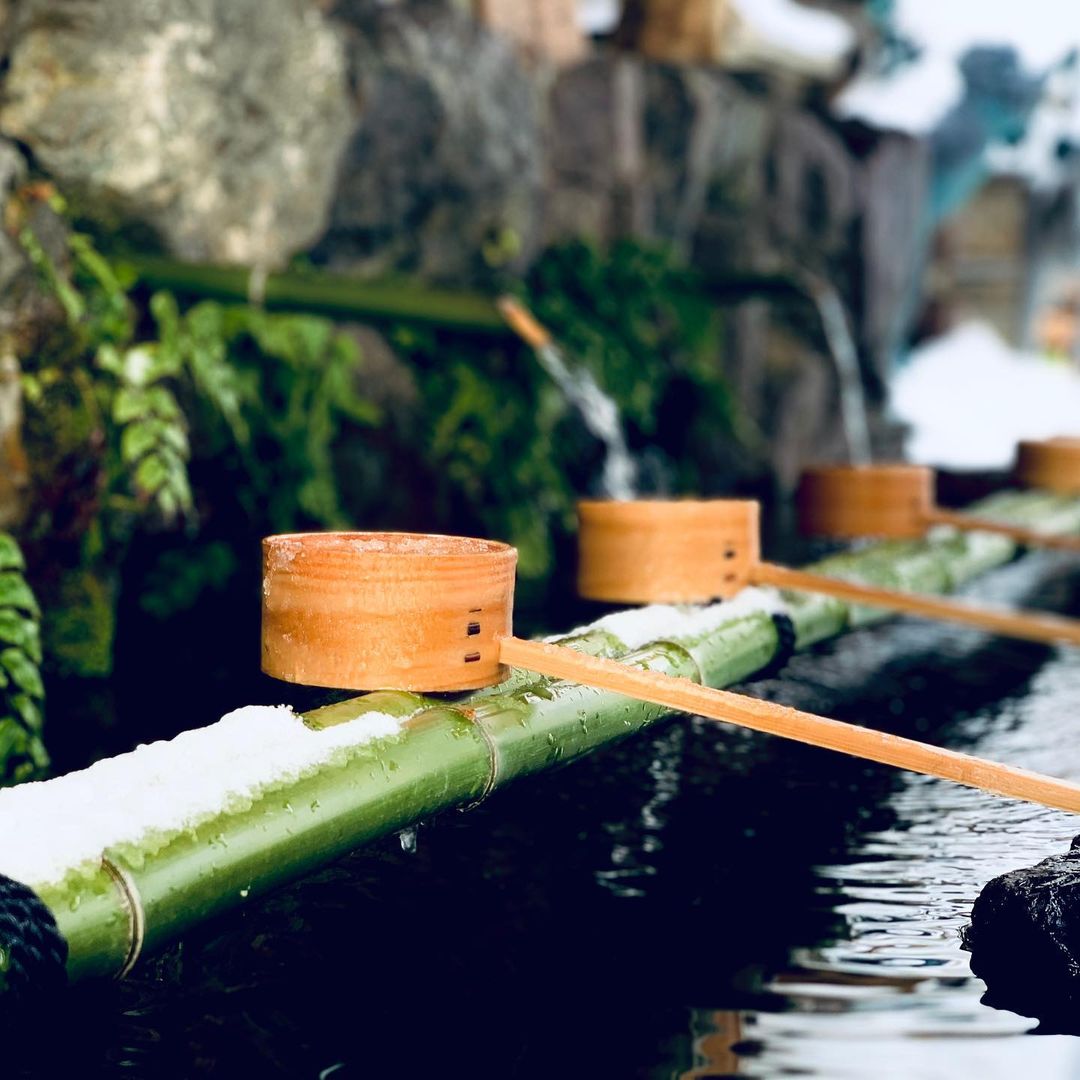
Image credit: @kampei_bomboo
Since Kifune Shrine is home to the god in charge of providing and controlling water, their unique omikuji (御神籤; fortune-telling strips) also involve water. The omikuji here is called mizu-ura mikuji and cannot be found elsewhere.
After purchasing the mizu-ura mikuji, head to the small pool of water located near the main hall. The slip of paper will be blank when you purchase it. To reveal your fortune, gently place the slip on the water.
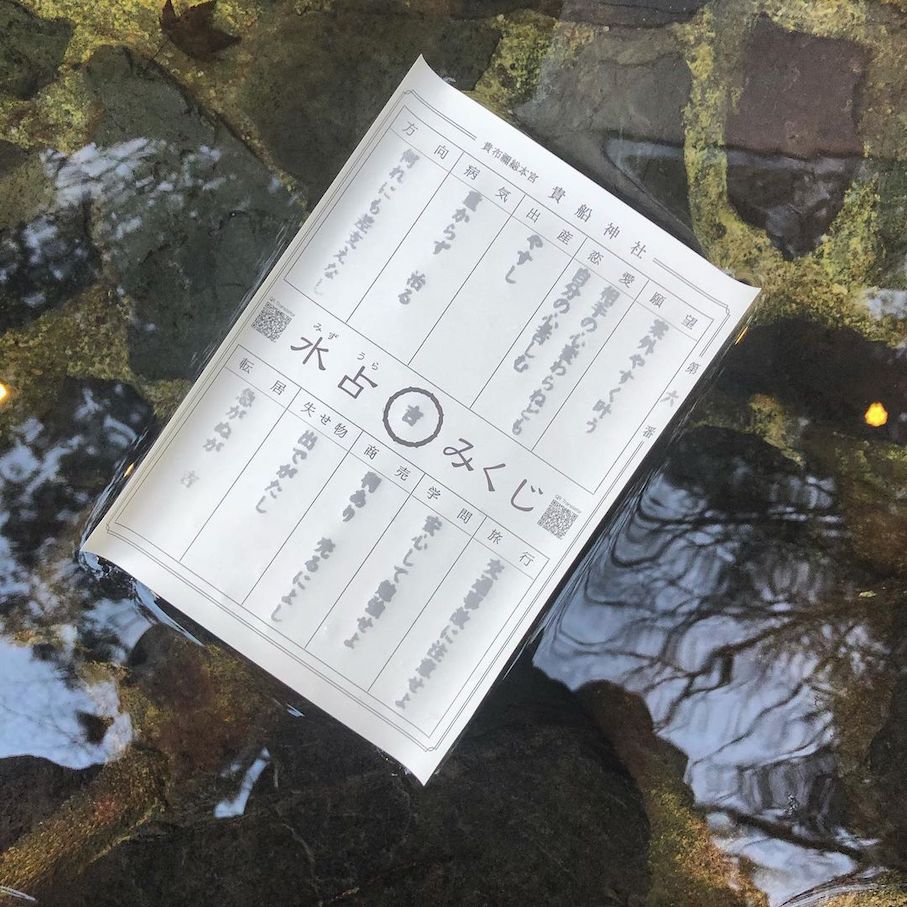
Image credit: @r_lotus_00
Within a minute, your fortune will magically appear on the slip of paper. The slip is only available in Japanese, but you can scan the QR code printed on the slip to translate your fortune into other languages, including English and Korean.
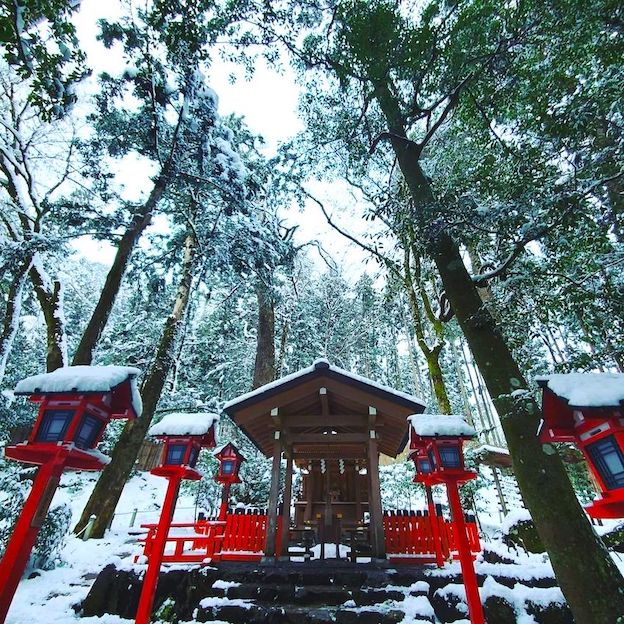
Image adapted from: @asa_ri.asa_ri
Kifune Shrine is also home to Iwanaga-no-himemikoto, the god of matchmaking. Those seeking blessings for their marriage or love life can visit the rear shrine, Yui-no-yashiro, which has been known for its matchmaking blessings since the Heian period.
Kifune Shrine in other seasons
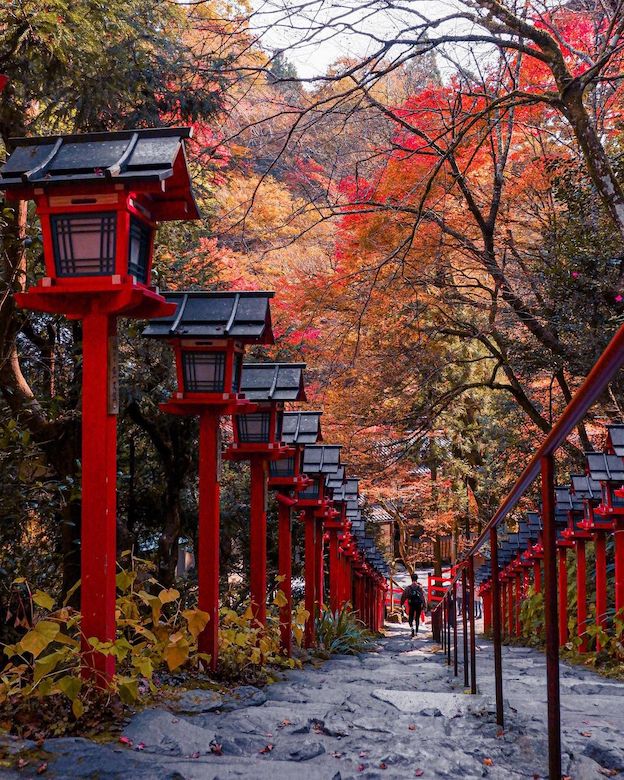
Image credit: @yuki_asobi_jp
Although Kifune Shrine is spectacular in winter, it looks just as beautiful in other seasons. Autumn is a popular season to visit as maple trees tower over the stone stairs.
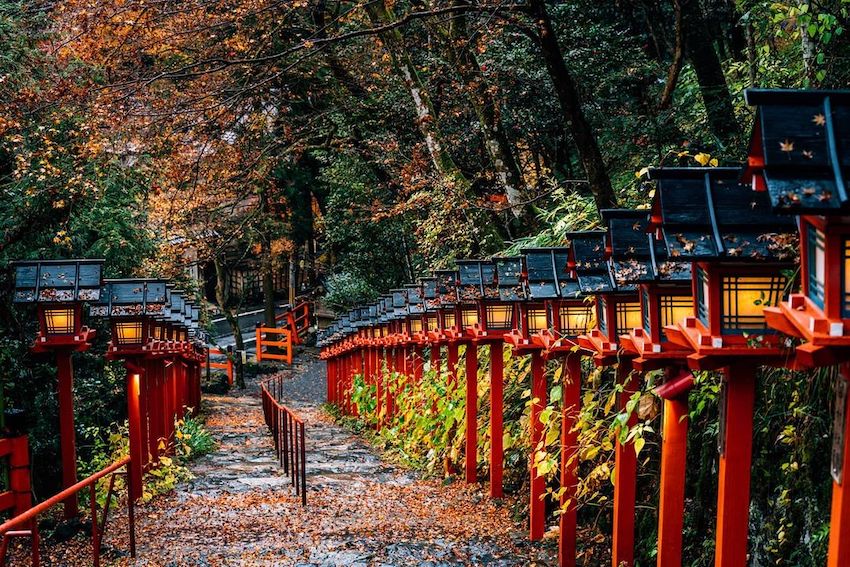
Image credit: @hino0117
The shrine holds an autumn illumination event every November. The vermillion lanterns along the pathways and the main hall are lit up once dusk falls.
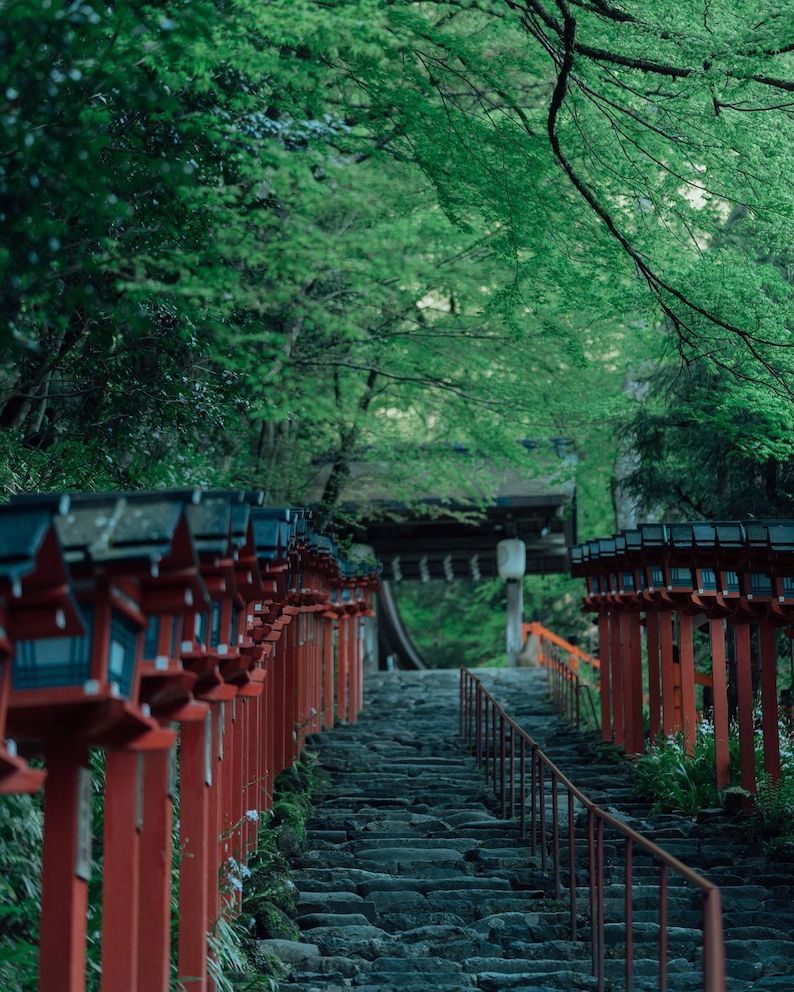
Image credit: @kifunejinja
In summer, the temperature at Kifune Shrine is slightly lower than the city thanks to its location within the mountains. Many visit the shrine during summer for a temporary respite from the heat. Besides protecting visitors from the sun, the leafy greens that loom over the shrine and the stone stairs also give the area a mystical vibe.
How to get to Kifune Shrine
From Kyoto Station, take the JR Nara Line to Tofukuji Station and transfer to the Keihan Main Line to Demachiyanagi Station. At Demachiyanagi Station, board the Eizan Kurama Line to Kibune-guchi Station, which is the nearest station to Kifune Shrine. From Kibune-guchi Station, it’ll take you either 5 minutes by bus or 20-30 minute on foot to reach Kifune Shrine.
Address: 180 Kuramakibunecho, Sakyo-ku, 601-1112 Kyoto
Opening hours: 6AM-6PM, Daily (1st December-30th April) | 6AM-8PM, Daily (1st May-30th November)
Admission: Free
Telephone: 075-741-2016
Website
Check out these articles for more:
- Japanese zen gardens
- Mountains in Japan
- Japanese autumn leaves viewing spots
- Kyoto cafes housed in heritage buildings
- Life-size Evangelion replica in Kyoto
Cover image adapted from: @CultureKyoto
